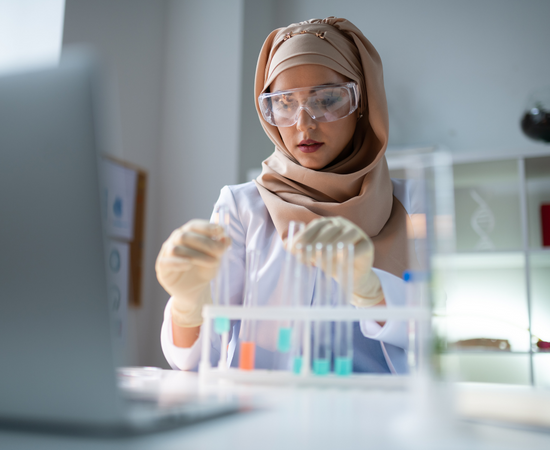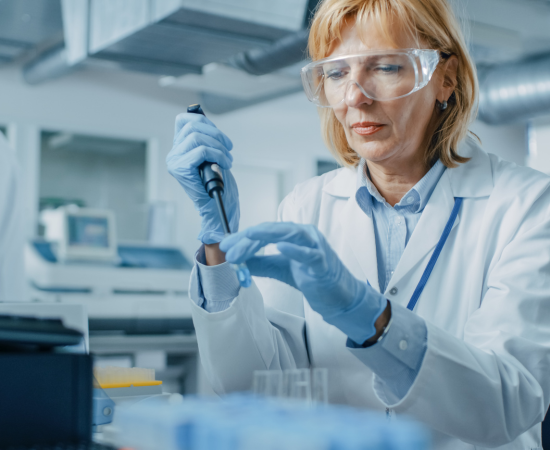Licensed and Unlicensed Medicines
Understanding the differences between licensed and unlicensed medicines and when it may be clinically appropriate to use an unlicensed product.
A licensed medicine has been assessed for efficacy, safety and quality. A licensed medicine has been manufactured to appropriate quality standards and when placed on the market it is accompanied by product information and labelling. However, clinical situations may arise when the use of unlicensed medicines or use of medicines outside of their licence (off-label) may be judged by a prescriber to be in the best interests of the patient.[1]
Examples of clinical situations where the use of an unlicensed product may be required include[2]:
- Paediatric medicine, due to the requirement for smaller or unusual dosing regimes.
- Patients with swallowing difficulties.
- Patients needing to receive medication through enteral feeding tubes.
An off-label medicine is a licensed medicine which is used outside its licence terms (e.g., outside of defined indications, doses, routes of administration or for an unapproved patient group such as children).[1]
Unlicensed medicines may take the form of[3]:
‘Specials’ – medicines made under a specials licence by a manufacturer.
Imports – products with a licence, usually in another country, which are imported into the UK.
Extemporaneous products – formulations for an individual patient made by a pharmacist compounding ingredients, this can include tablet manipulation by crushing tablets or suspending.
Manipulated products – medicines in which the formulation has been altered (this may happen if someone can’t swallow tablets) e.g., by crushing tablets or opening capsules by the medicine administrator or carer.
Specials and licensed imports should be considered first, followed by extemporaneous medicines and then manipulation.
Classification, advantages, considerations and examples of unlicensed products commonly used. Adapted from Tomlin et al[3]
| Class | Description | Advantages | Considerations when prescribing and purchasing unlicensed medicines |
|---|---|---|---|
| Special*† | Product made under a specials licence by a manufacturer | Much greater quality assurance than extemporaneous medicines. Manufactured to set formulations and manufacturing processes GMP inspected site | Product may not be suitable for a particular patient with a particular condition e.g. may contain too much alcohol for a neonate. Different manufacturers will use different formulations and manufacturing methods, this could potentially alter clinical outcome and taste acceptability. Patient information sheets may not be provided |
| Import*‡ | Product with a licence, usually in another country, that is imported into the UK | The quality is reasonably guaranteed if the product is imported from a country with similar regulatory standards | The product may or not be licensed for the age group or condition for which it is now being prescribed. Regulatory standards in some countries may not be as stringent as in the UK. Product may contain excipients inappropriate for children, or the condition in which it is being used may be outside of its license. Packaging and labelling may not be in English Importation costs may be expensive. Counterfeit medicines could contain the wrong ingredients, with insufficient or no active ingredients, or with high levels of impurities and contaminants. |
| Extemporaneous medicine (‘extemp’) | Product made by a pharmacist compounding (combining) ingredients for an individual patient and an individual purpose | If the ingredients are in stock in the pharmacy, the formulation may be able to be produced immediately, which avoids any delay in treatment or return visits for the patient/carer | Very little built-in or no pharmaceutical analysis/quality assurance. Lack of data on dose uniformity. Formulations and manufacturing processes may not be validated. Pharmacist may be checking his/her own work, so no robust second-check process is in place. |
| Manipulation | Altering formulation (e.g. by crushing tablets) or emptying capsules and dispersing in water | Cheapest and fastest method for dispensing a medicine to a child | Crushing modified-release tablets can alter drug release and dissolution rates, leading to potential underdosing or over dosing. Crushing and suspending tablet contents in liquid can lead to more rapid degradation of ingredients. Lack of pharmaceutical quality assurance e.g. dose uniformity. Volume measured may not contain the amount of medicine prescribed if product is dispersible rather than dissolvable. Manipulated products may be safe to use, but in general we do not have evidence to support their use and dosing is likely to be variable so they should be avoided if at all possible. |
* Specials and licensed imports should be considered first, bearing in mind the pros and cons in each individual case, followed by extemporaneous medicines, and then manipulation
† Although a special should be made to the requirements of the individual patient, it is rare for a prescriber or pharmacist to engage with a manufacturer about formulation and excipients. It is essential that pharmacists understand the requirements of the patient and that prescribers understand the problems that using an unlicensed medicine entails. A specials manufacturer will not be able to provide specific requirements as in a batched special and in reality, would have to supply an extemporaneous medicine.
‡ The imported product may be licensed in the originating country for exactly the same condition that it is being imported to treat. However, products are often imported because they are available in the required form but may be licensed for a different indication.
ROS000046-004 DOP August 2025
- MHRA. Off-label or unlicensed use of medicines: prescribers’ responsibilities. 2014. Available at: https://www.gov.uk/drug-safety-update/off-label-or-unlicensed-use-of-medicines-prescribers-responsibilities. Accessed Aug 2025.
- Donovan G, Parkin L, Wilkes S. Special unlicensed medicines: what we do and do not know about them. Br J Gen Pract. 2015. Available at: https://www.ncbi.nlm.nih.gov/pmc/articles/PMC4655741/. Accessed Aug 2025.
- Tomlin. S, Cockerill. H, Costello. I et al. Making medicines safer for children- guidance for the use of unlicensed medicines in paediatric patients. Guidelines. MGP ltd. 2018.







